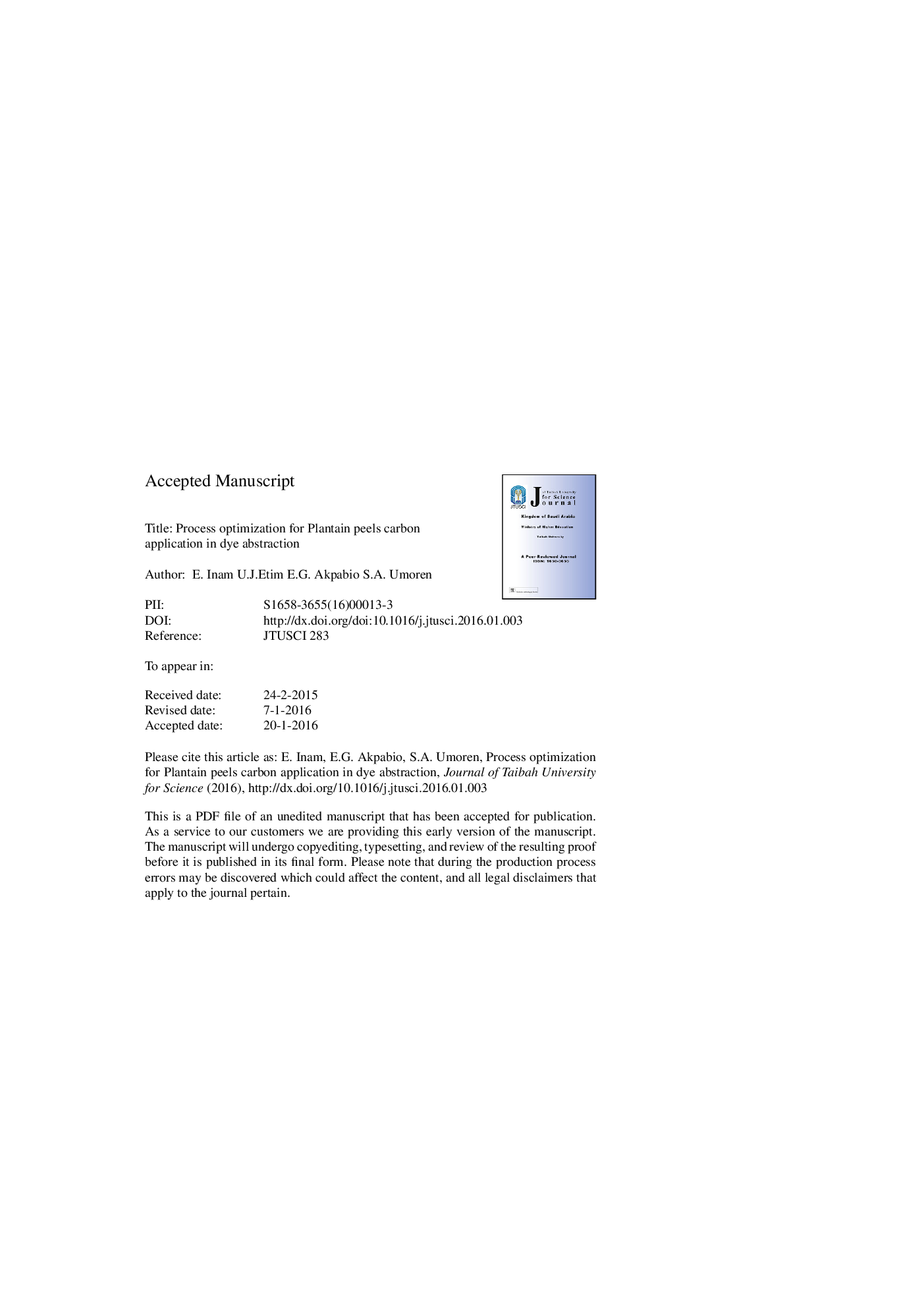| Article ID | Journal | Published Year | Pages | File Type |
|---|---|---|---|---|
| 5143580 | Journal of Taibah University for Science | 2017 | 29 Pages |
Abstract
Activated carbon obtained from plantain peels was applied to the optimization of the adsorption process parameters for abstraction of colour from simulated dye effluent. The activated carbon was prepared and characterized using nitrogen adsorption, X-ray diffractometry (XRD) and Fourier transform infrared spectroscopy (FTIR). Equilibrium isotherms were modelled using the Langmuir, Freundlich, Dubinin-Radushkevich and Temkin models; the Temkin and Dubinin-Radushkevich models provided the best fit for the sorption process, with a correlation coefficient greater than 0.95. The D-R model suggested a chemical process. The pseudo second-order kinetic model agreed well for fitting experimental data with the calculated adsorption capacity, qe, (46.5 mg/g), which was reasonably close to the experimental value (47.3 mg/g). Optimization of the process parameters was achieved using response surface methodology (RSM) - Box-Behnken design, where factors considered are represented on three levels: (â1), (0) and (+1) for high, mean and low levels, respectively. ANOVA fits a quadratic model with prob > F less than 0.05 (<0.0001) at 95% confidence level. From this modelling, significant factors for dye removal have been identified.
Related Topics
Physical Sciences and Engineering
Chemistry
Chemistry (General)
Authors
E. Inam, U.J. Etim, E.G. Akpabio, S.A. Umoren,
